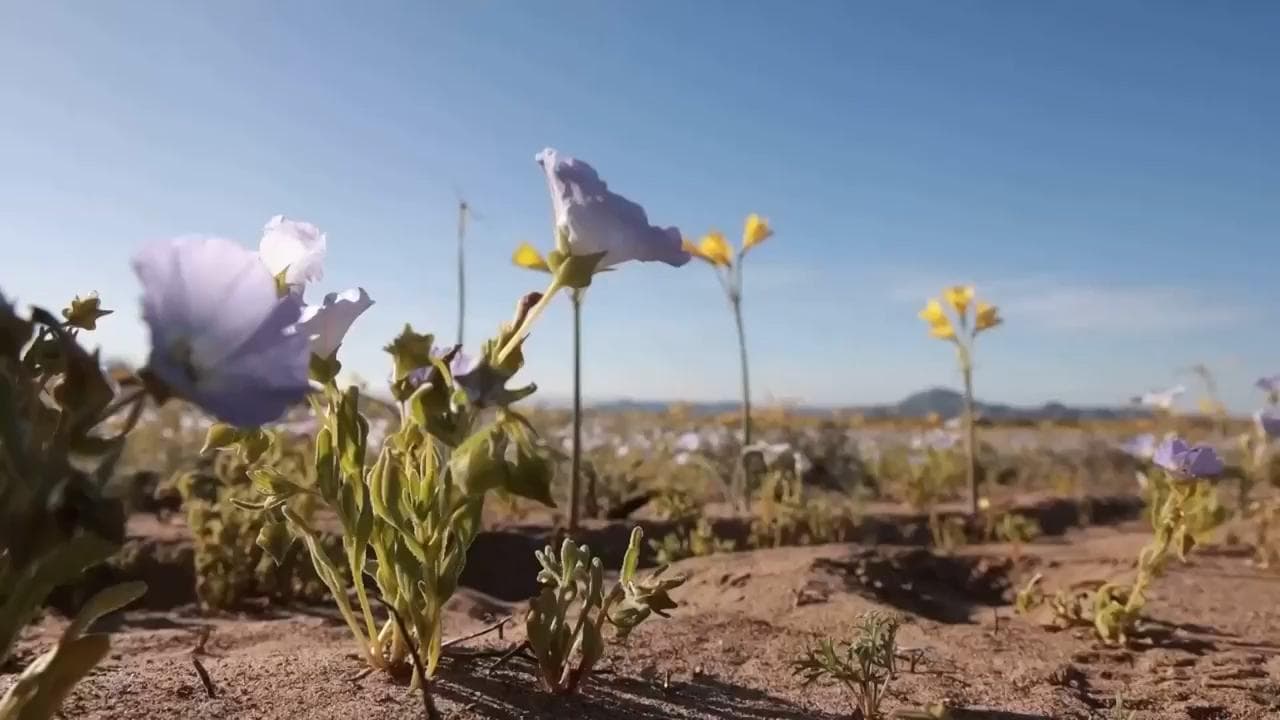Loading News Article...
We're loading the full news article for you. This includes the article content, images, author information, and related articles.
We're loading the full news article for you. This includes the article content, images, author information, and related articles.
Unusual heavy rainfall has triggered a vibrant bloom in Chile's Atacama Desert, one of the world's driest regions, offering a unique natural spectacle that draws global attention.

A rare and breathtaking phenomenon, known as 'Desierto Florido' (Flowering Desert), has transformed parts of Chile's Atacama Desert into a dazzling carpet of fuchsia-colored wildflowers. This extraordinary event, occurring in one of the driest nonpolar deserts on Earth, is a direct result of unusual downpours experienced during the Southern Hemisphere's winter months.
The Atacama Desert, located along the Pacific coast of South America, typically receives an average of only 15 mm (0.6 inches) of rainfall annually, with some areas recording as little as 1 to 3 mm per year. However, increased precipitation has awakened dormant seeds and bulbs, leading to a widespread bloom that is a marvel of nature.
The 'Flowering Desert' is a cyclical event, historically occurring every few years, often linked to the El Niño-Southern Oscillation (ENSO) climate pattern. El Niño brings warmer ocean temperatures, leading to increased evaporation and, consequently, more rainfall in the region. Over the past four decades, approximately fifteen such events have been recorded in the Atacama region, particularly around Copiapó and Huasco.
While typically occurring every five to seven years, recent blooms have shown some deviation from this schedule, with notable events in 2015, 2017, and an unusual occurrence in 2022 during a La Niña period. This year's bloom, anticipated since August 2025, was expected to peak in October before gradually fading by mid-November.
The Llanos de Challe National Park, situated within the Atacama Region, is a key area for observing this phenomenon and plays a crucial role in its conservation. Established in 1994, the park encompasses 45,708 hectares and is dedicated to protecting the diverse flora and fauna of the coastal desert ecosystem. The Chilean government has implemented protective measures to conserve the biodiversity of the 'Flowering Desert,' including prohibiting the cutting of flowers.
Experts like Jorge Carabantes, head of protected areas at Chile's National Forestry Corporation (CONAF), have been monitoring the bloom, noting its expected stretch from the Totoral area to Caleta Chañaral de Aceituno. Ana María Mujica, a professor at the Pontifical Catholic University of Chile's Faculty of Agriculture & Forestry, highlights the strong correlation between these blooms and El Niño currents.
While a spectacular display, the 'Flowering Desert' underscores the delicate balance of desert ecosystems and their susceptibility to climatic shifts. The increased frequency of these events, potentially linked to changing climate patterns, could have long-term implications for the desert's unique biodiversity. Conservation efforts are vital to protect the endemic plant species, many of which do not grow anywhere else in the world.
The precise long-term impact of more frequent 'Flowering Desert' events on the Atacama's ecosystem remains an area of ongoing study. While visually stunning, it is unclear how these altered patterns of rainfall and bloom might affect the desert's overall ecological stability and the survival of its unique flora and fauna.
The current bloom, which began in late September, is expected to continue through October, gradually receding in the first half of November 2025. Authorities and environmental organisations will continue to monitor the phenomenon and its ecological effects.
Observers will be keen to see if the 'Flowering Desert' continues to occur with increased frequency and how this might influence future conservation strategies for the Atacama Desert. The event also serves as a powerful reminder of the impact of global climate patterns like El Niño on local environments.